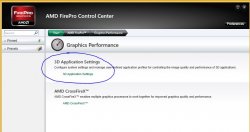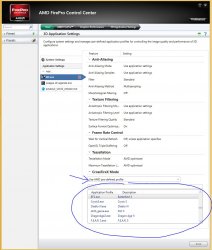Actually Titan V 780Ti are game dependent.
You are confusing the 780Ti with the regular GTX 780.
The GTX 780 and the Titan are roughly on par with each other - especially the factory overclocked 780's.
The 780 Ti is faster than a Titan in every way except compute performance, where it is artificially restricted.
It has more CUDA cores, is clocked higher, and uses faster RAM than the Titan.
Nvidia will be releasing the Titan Black Edition in February to replace the Titan, which will essentially be a 780 Ti with 6GB RAM and unlocked compute performance.
Virtually nothing gaming related will come close to using the 3GB RAM on a 780 Ti though, so the Titan having double the RAM doesn't matter there.
There will also be a GTX 790 released around March, which will be two 780's on a single card.
You might get some slow down in FPS (e.g. half your refresh rate) with VSync on and a too demanding graphic quality. What is more common is frame tearing when your FPS exceed your refresh rate.
This is why I suggest anyone buying a system for gaming goes with Nvidia - they're far more focused on gaming performance/features than AMD are.
Nvidia have a number of technologies to solve, or at least reduce these problems.
- G-Sync. This runs the game at an unlocked framerate, and controls the display's refresh rate to match. You get the low latency and unlocked performance of running a game without v-sync, but do not get the screen tearing or stuttering that would normally result in.
- Adaptive V-Sync This mode will enable V-Sync when the framerate exceeds your refresh rate (preventing tearing) but disables it when the framerate is below that. This prevents the game from dropping from 60 to 30 (or 144 to 72 to 48 to 36 etc.) though it will tear when that happens.
- Half (or third) framerate Adaptive V-Sync. This would let you have all the benefits of adaptive v-sync on your 144Hz monitor, treating it as if it were a 72Hz display. So the framerate would be capped at 72fps, and V-Sync would be enabled at or above this, and it would be disabled below it.
So I guess I must be in the sweet spot on my system with 144Hz I would drop to 72fps if I have VSync on and if I can't quite get to 144fps. Which I never have turned on but 72fps would not cause a visual loss in smoothness either.
72fps at 144Hz would avoid screen tearing, but would stutter as a result of repeating every frame.
Try setting the display to 72Hz if it is supported, or something in-between 72-144Hz. (I think most will support 100Hz)
Maybe it drops to 120fps because the monitor also supports 120Hz?
Only if you're actually running at 120fps. With the exception of the new G-Sync displays, refresh rate is not dynamically adjusted during gameplay.
On the flip side, If I exceed 144fps that would introduce tearing but at 144fps you would hardly see it happen, it's just too fast a frame rate and the exact experience I have, I don't get frame halving or tearing on my system.
Screen tearing happens when the framerate is not synced to the refresh rate. It happens whether you are above or below the refresh rate.
When you are below the refresh rate, there will be a single tear, and when you are above it, there will be multiple tears.
Triple-buffering allows for an unlocked framerate without tearing, but it will add an additional frame of latency, and is not supported by all games. While it fixes tearing, it does not fix stuttering.
And stuttering would be totally unacceptable for any game I play, I simply wouldn't play it.
If your framerate does not match your refresh rate, the game is stuttering.
Whether you notice it or not is another matter. It's very obvious to me.






